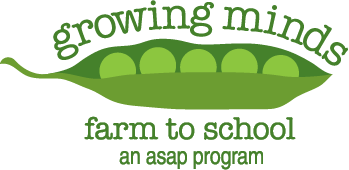Brief Description:
Students create an experimental garden, altering variables and evaluating results.
Objectives:
- Brainstorm the factors that affect plant growth
- Make group decisions to design an experiment
- Take ownership of the garden by helping to decide what is planted
- Students make predictions about how their experiment will impact the growth of their plant
Materials:
science notebook, drawing and writing materials.
Getting Started / Procedure
Begin by talking with students about their garden experiences. Take a poll to see how many students have gardens at home, and how many of their grandparents have/had gardens. Discuss with students why they think our culture as a whole has shifted away from gardening, how has that impacted their generation? Have students brainstorm why someone today would grow a garden? – Nutrition, fitness, fun, save money, beauty, connection with surroundings, pesticides, knowing how food was grown – impact on environment…
As a class make a top ten list of things students would like to grow in a garden, have them consider if they have the right climate and space? Would it grow during the school year?
Brainstorm a list of what might need to be considered when planning a garden and basic needs of plants (space, time, soil type, hardiness, purpose of garden, fertility, water. light etc.). Discuss the term “variable”. How would the plants grow differently if we reduced or increased one of these variables?
Explain that as a class you are going to design a garden experiment to look at the impacts of some of these variables on plant growth. You may want to review or explain the concept of a control/experimental groups or experimental design.
Based on your top ten list of things to grow, have students vote on the top two (or more if you have more space/time).
Based on your list of variables/basic needs of plants, have students vote of the top two they would like to use in their experiment.
Working as a class, design two experiments (altering one of the variables the class chose). For example, students may choose to plant strawberry starts. In one plot they plant the starts, water, and add synthetic fertilizer. In the other plot the may plant the starts, water and add bagged cow manure.
Each student should write up the experiment in their science notebook, including labeled diagrams and predictions of the outcomes.
Prepare and plant the experimental gardens. You may want to incorporate fractions, area and/or perimeter calculations while breaking up the garden into plots. Make sure students are recording the steps and taking notes. Discuss with students how differences in the other variables could impact their results (if you plant carrot seeds too close together, which might inhibit growth more than the other variable you are trying to control.)
Students should label all plots.
Determine a watering schedule so that seeds/starts do not dry out.
Each week record measurements and observations. (depending on the type of plant, you may want to measure growth in different ways – height, # leaves, size of leaves, etc.)
At the end of the experiment have students write up a report, including how their predictions differed from the actual outcome and why. The length, depth, and components of this report will be determined by the teacher.
